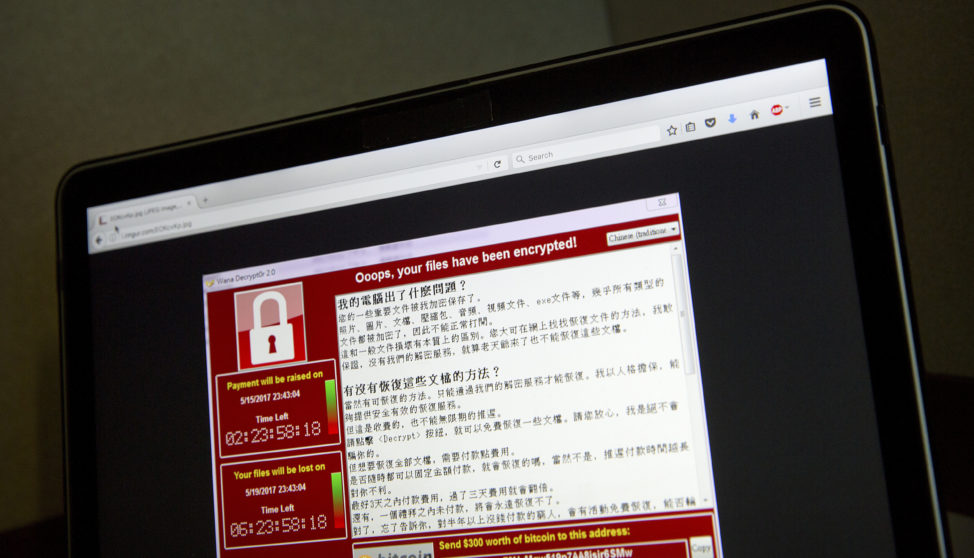Today’s Tech Sightings:

A screenshot of the warning screen from a purported ransomware attack, as captured by a computer user in Taiwan, is seen on laptop in Beijing, China, May 13, 2017. (AP)
WannaCry Ransom Note Analysis Points to Chinese-speaking Perpetrator
Cybersecurity experts continue to comb through evidence to identify the criminals who launched the global ‘WannaCry’ ransomware attack. While initial speculation linked the attackers to North Korea, researchers at cybersecurity firm Flashpoint now say Chinese speakers could be behind the English and Chinese versions of the ransom notes that popped up on computer screens in 28 languages. Minor typos in the Chinese version suggest the ransom note was typed on a Chinese-language input system, and a grammatical mistake in the English version suggests the author is not a native English speaker.
Newly Discovered Vulnerability Raises Fears of Another ‘WannaCry’
Researchers at cybersecurity firm Rapid7 have detected a vulnerability in Samba networking software that could leave thousands of computers vulnerable to attack. Rapid7 found more than 100,000 Linux and UNIX computers running Samba around the world. If exploited, the vulnerability could allow hackers to take remote control of affected computers.
Study Suggests Users More Rational on Smartphones Than PCs
A new study featured in the journal Computers in Human Behavior hypothesizes that people are likely to make more rational decisions on smartphones that focus their attention on a single task, blocking out outside information. The researchers say PC users are more open to outside information and tend to rely more on emotional decision making.
More:
- Google Removes Apps That Use Ultrasonic Frequencies to Track Users
- Samsung Says Galaxy S8 Iris Scanner ‘Difficult’ to Hack
- Baidu’s New Text-to-speech System Can Master Hundreds of Accents
- South Korea Has World’s Highest Concentration of Robots to Humans
- Foreign Firms Fret as China Implements New Cybersecurity Law
- Facebook’s Latest Trending Topics Tweak Aims to Kill Echo Chamber Problem
- Global Chat Platform Kik to Launch Digital Currency
- Dubai Deploys First Robotic Police Officer
- Survey: Yahoo’s Marissa Mayer Is the ‘Least Likable’ CEO in Tech
